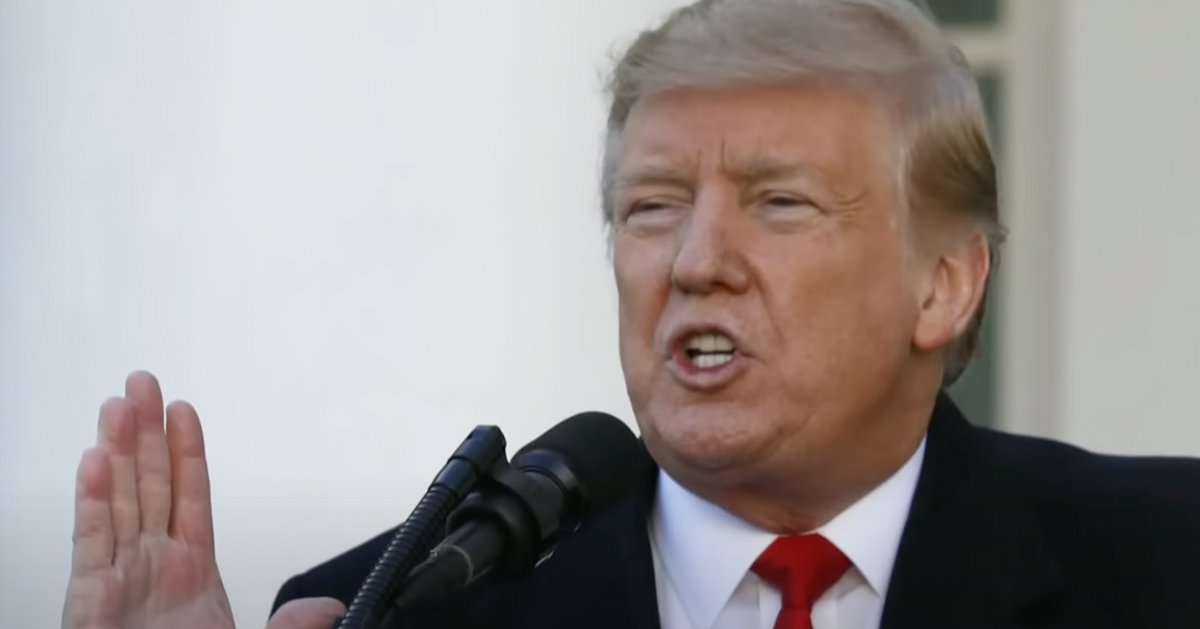Trump heralds end to New York congestion pricing scheme
New York City’s congestion pricing program, aimed at controlling traffic and generating revenue for public transit enhancements, has been halted by the U.S. Department of Transportation's Highway Division.
President Donald Trump praised the decision to end the pricing scheme, highlighting potential benefits for the city's economy and its future competitiveness, as Newsmax reports.
New York City had embarked on the congestion pricing journey to ease traffic around Manhattan and simultaneously raise funds for integral upgrades to its transit systems.
The program implemented variable tolls, which began on January 5, charging vehicles to enter certain busy areas south of 60th Street. Motorcycles were charged $4.50, passenger vehicles $9, and large trucks faced tolls up to $21.60.
Changes in Toll Strategy Elicit Reactions
These tolls were in addition to existing costs for using various bridges and tunnels leading into the city. There were, however, some credits available during peak hours to reduce these cumulative costs.
Even with these adjustments, the program faced criticism for various reasons, including the lack of a free highway alternative for drivers.
Transportation Secretary Sean Duffy was a prominent critic, pointing out that the program redirected funds from drivers to benefit the transit system rather than investing in highways.
Meanwhile, President Trump, who has vested interests in the tolled area, voiced his opinion against the program. He argued that such pricing threatened to make New York City less competitive by burdening it with additional costs and inconveniences. He warned that sustaining this program could potentially drive businesses away, reducing the city's appeal.
Hochul’s Previous Stance, Recent Actions
Initially, the program planned to impose a $15 toll, but the number was later reduced following intervention by New York Gov. Kathy Hochul.
After the general election, amid congressional races, she lowered the toll to $9, explaining that the original charge was too steep. Despite delaying the implementation, she denied accusations of political motivations.
Hochul's prior support for the higher toll only shifted when faced with considerable public opposition and political pressure.
Her actions reflect the complex balancing act her administration navigated between meeting transit funding needs and addressing residents’ economic concerns.
Broader Impact on Urban Traffic Management
With the program's termination, questions arise about the future of New York City's transportation and funding mechanisms for its subway and buses. The congestion pricing was not merely a means to reduce traffic but also an essential component of the transit system's financial strategy. Without it, New York City planners might need to explore alternative funding methods, complicating efforts to modernize the metropolis' transit infrastructure.
President Trump celebrated the end of congestion pricing by declaring that the program's cessation would spare New Yorkers the inconvenience and high costs associated with it. According to him, the conclusive end of the pricing plan saves a significant part of the city from what he outlined as problematic policies.
Federal View on Congestion Policies
Amid these developments, federal perspectives on urban congestion management are likely to evolve. Secretary Duffy’s remarks highlight the need for strategies that do not overly penalize drivers but instead balance vehicle passage with improvements to all transport modes, including highways.
This case may be watched by other cities considering or already employing similar congestion strategies. Whether New York’s experience will serve as a cautionary tale or a basis for adaptation will influence future plans for urban traffic management across the nation.
Seeing the beginning and eventual conclusion of New York City’s congestion pricing, the situation represents the complexity of negotiating urban policy advancements in contemporary political landscapes. The tension between raising necessary funds and maintaining economic viability poses significant challenges for city administration and planning.
The discourse on this form of urban management illustrates how pivotal decisions shape not only city life but also serve as precedents influencing broader national policies. As plans unfold, stakeholders from various sectors will remain entrenched in discussions about sustainable solutions for cities grappling with similar challenges.




